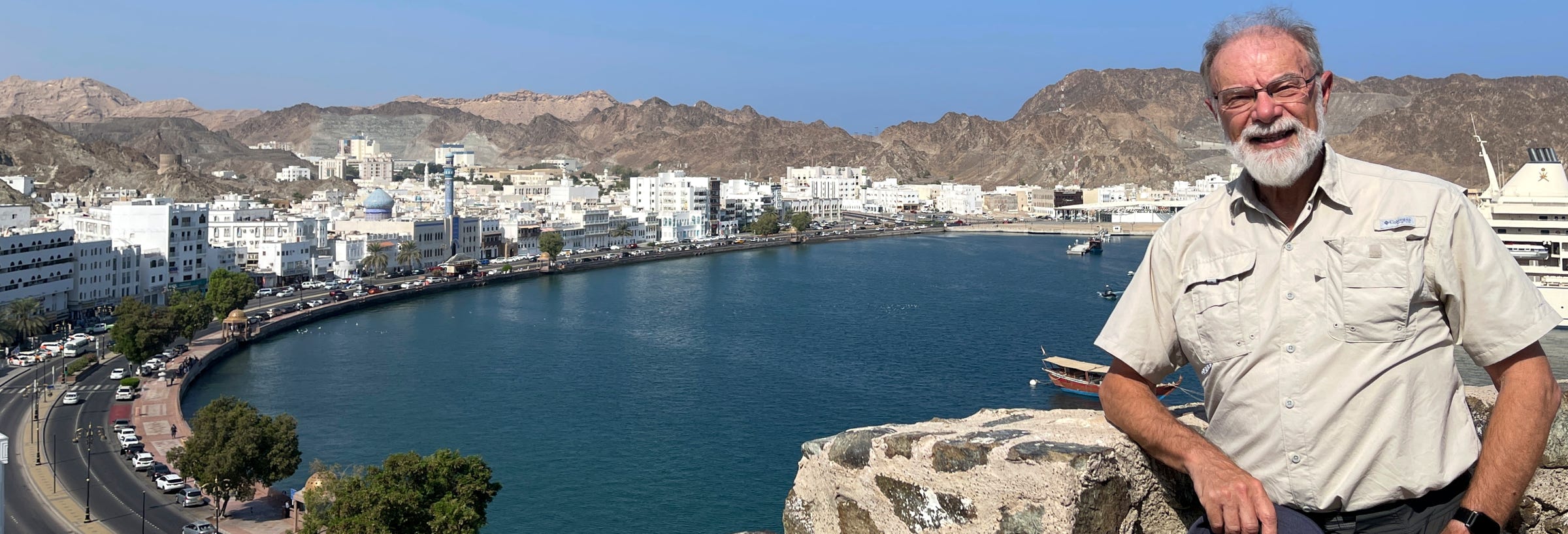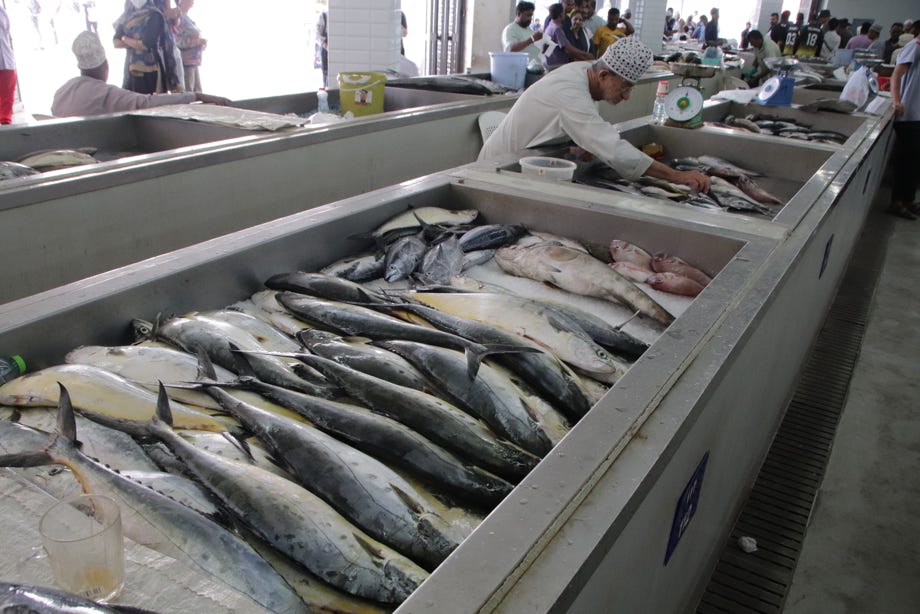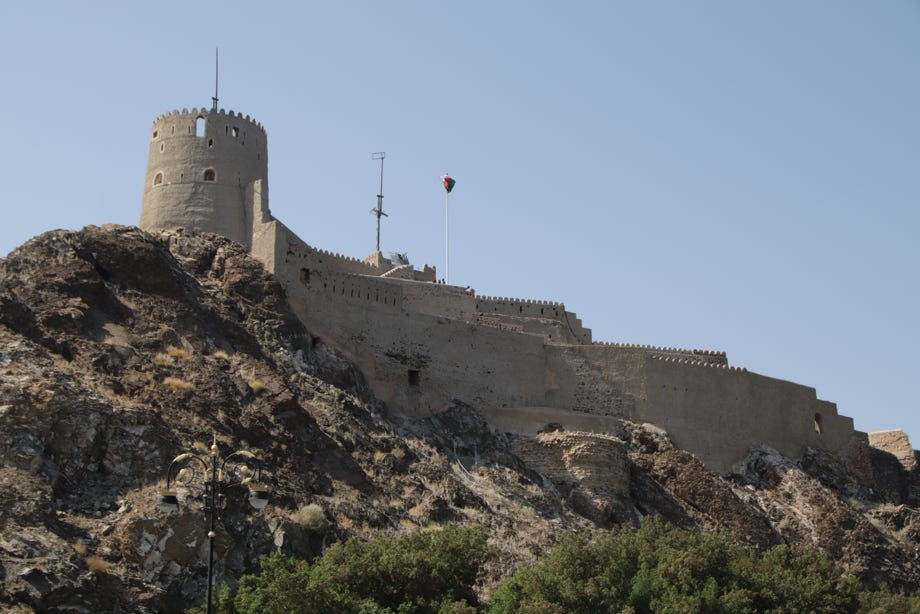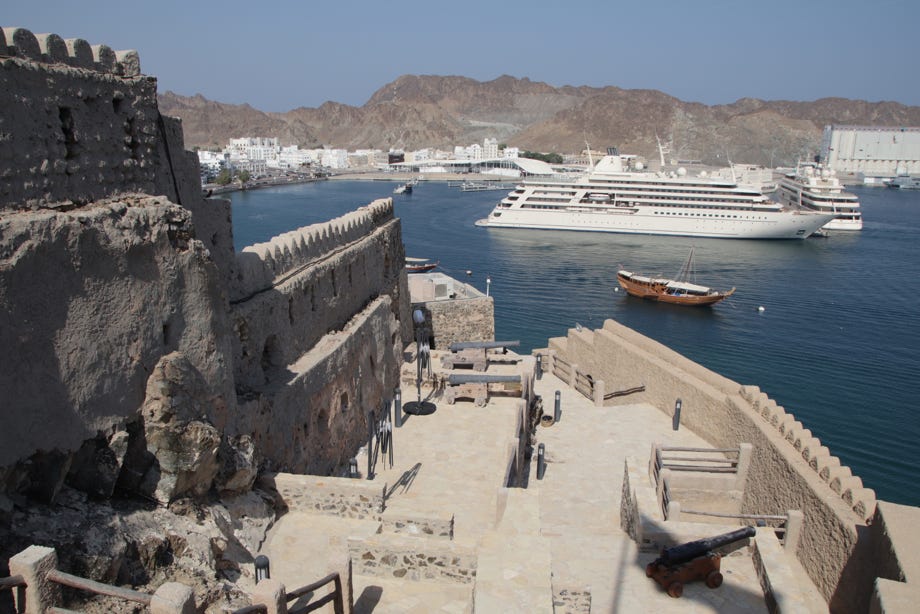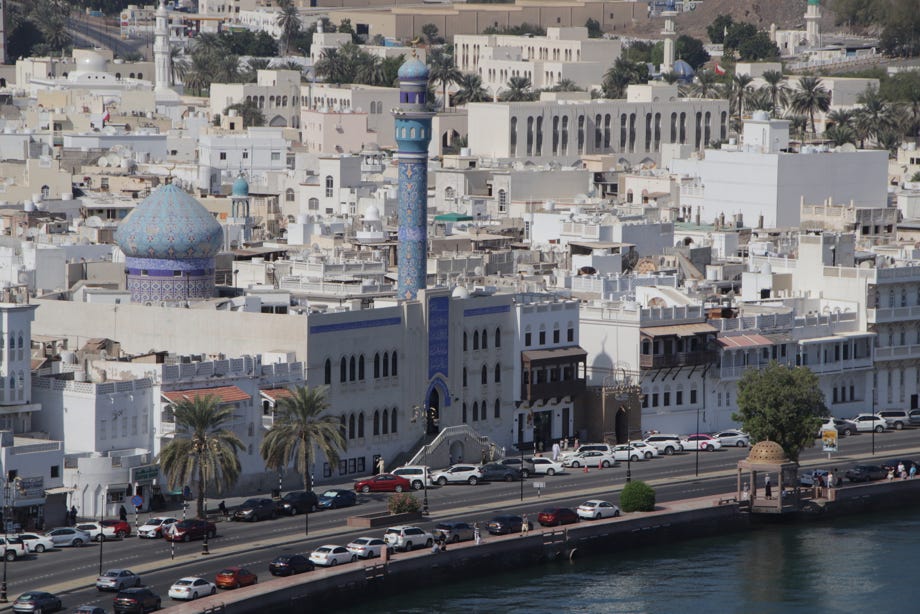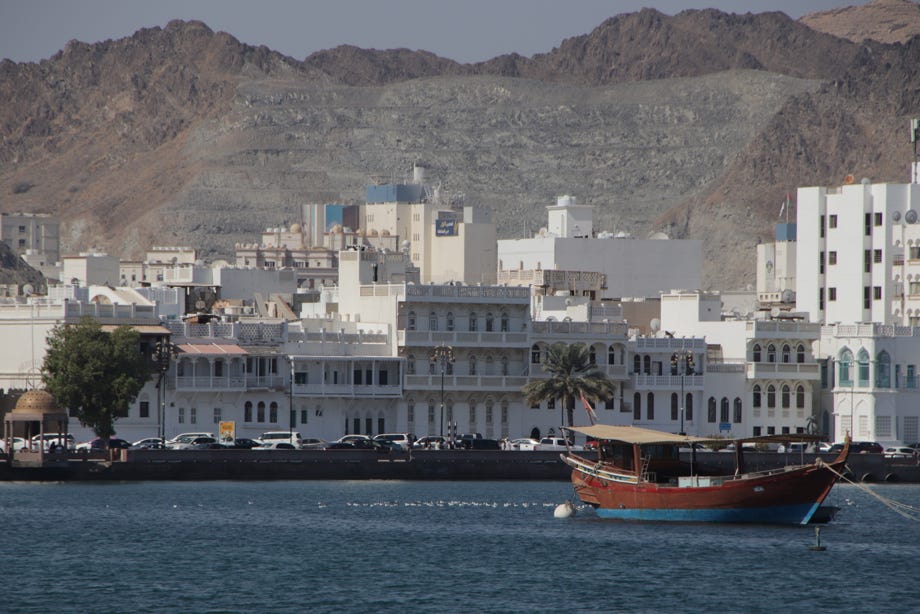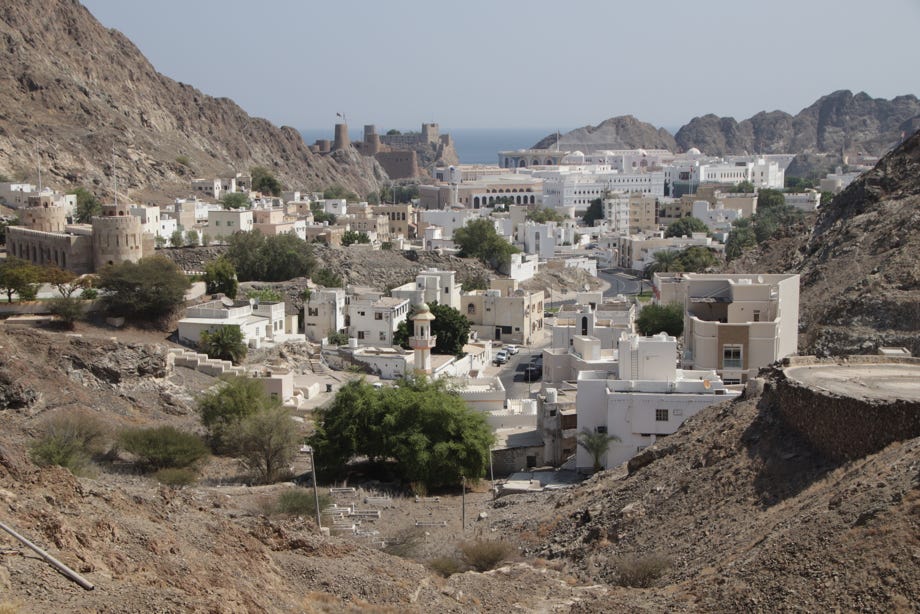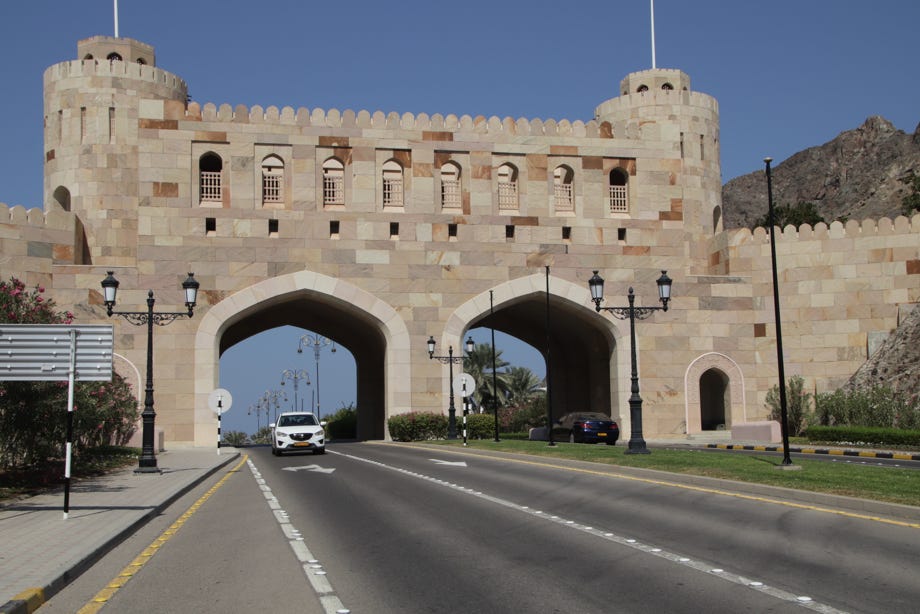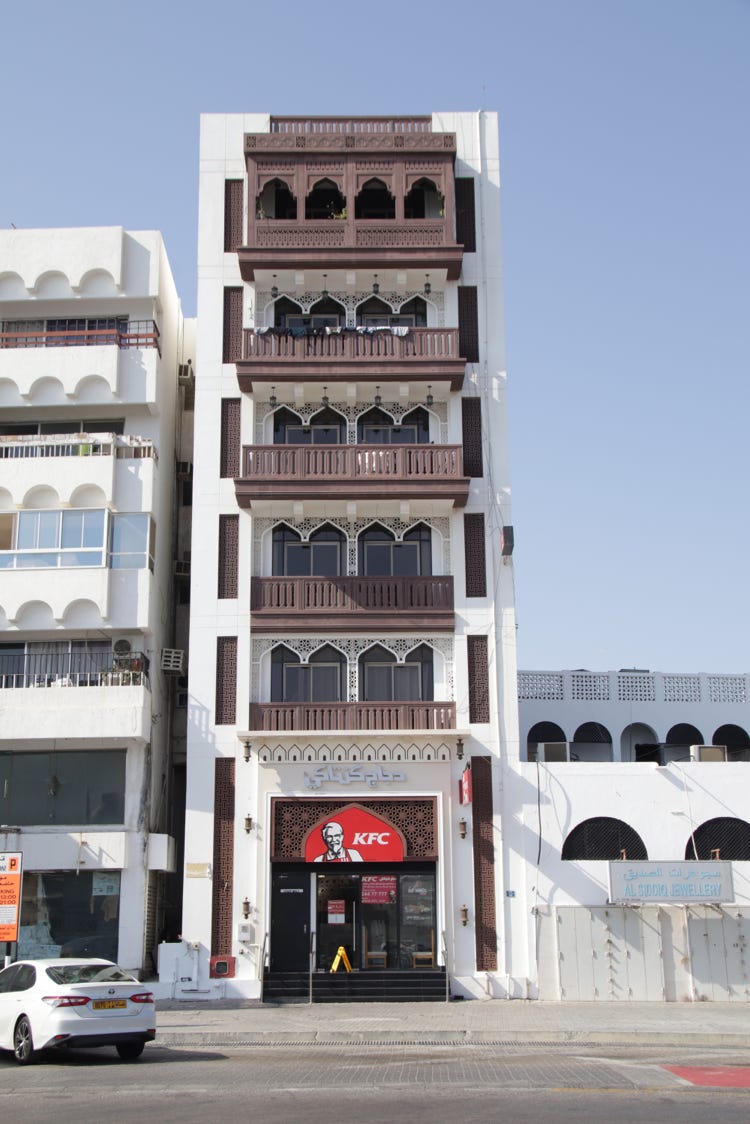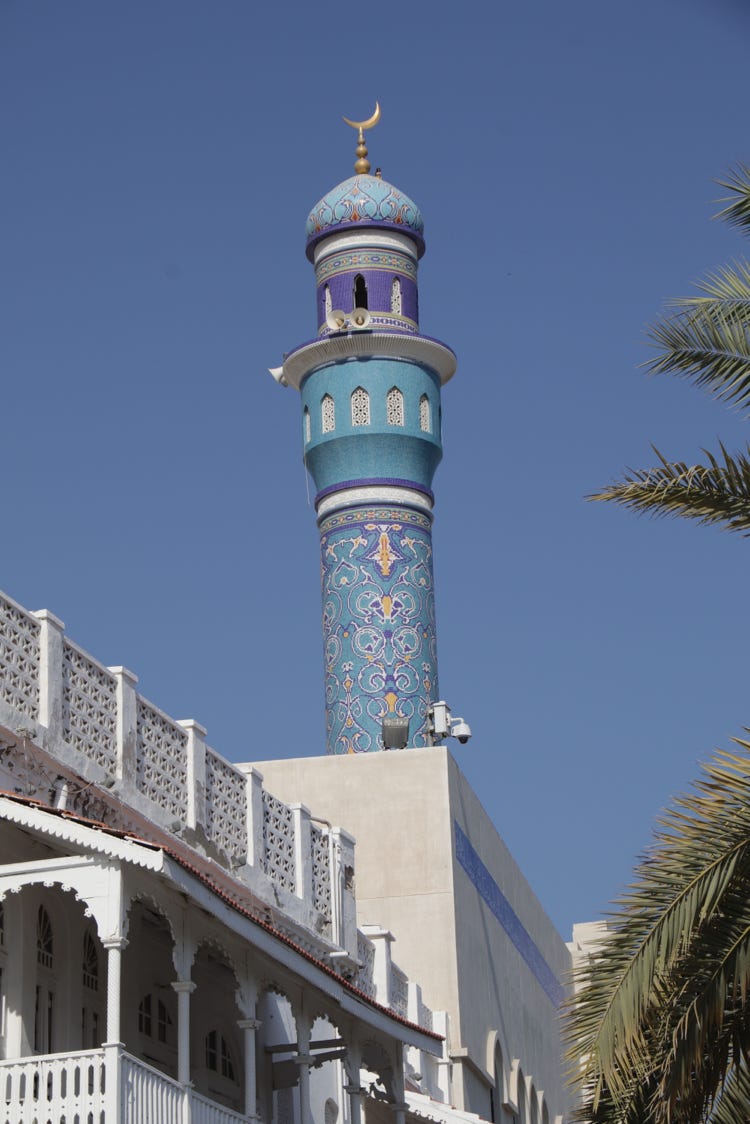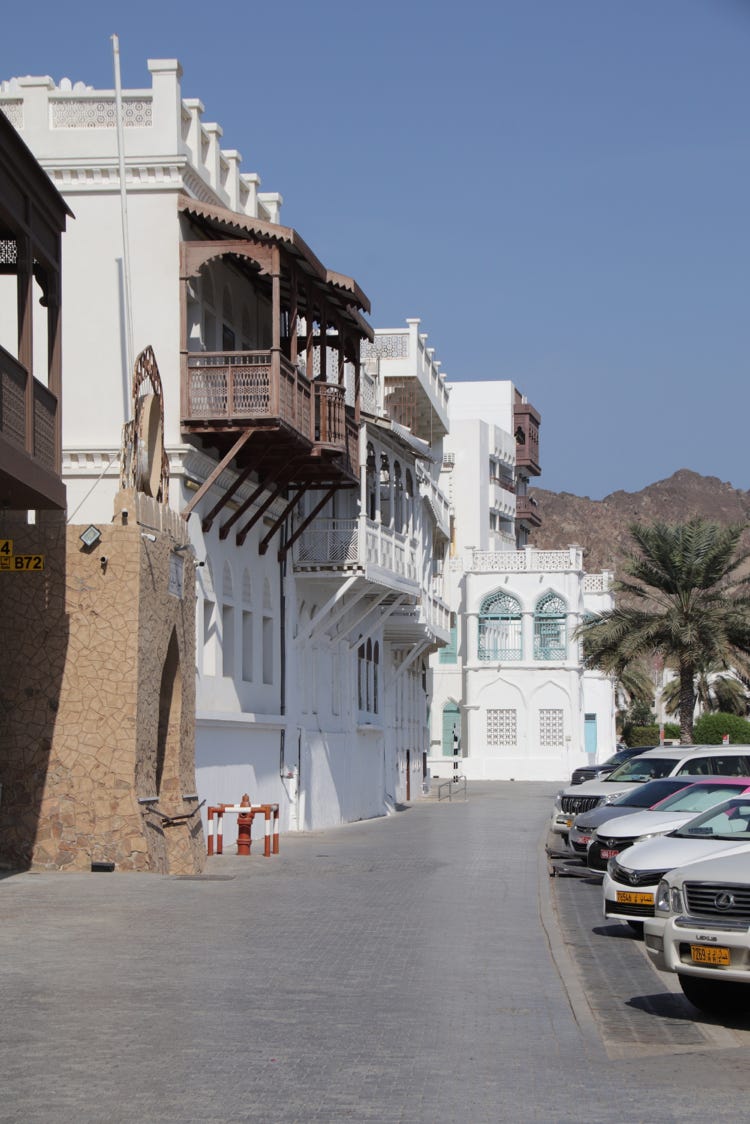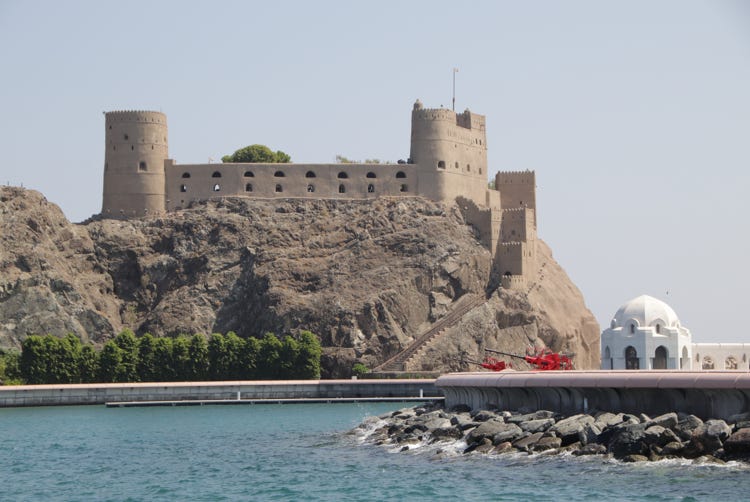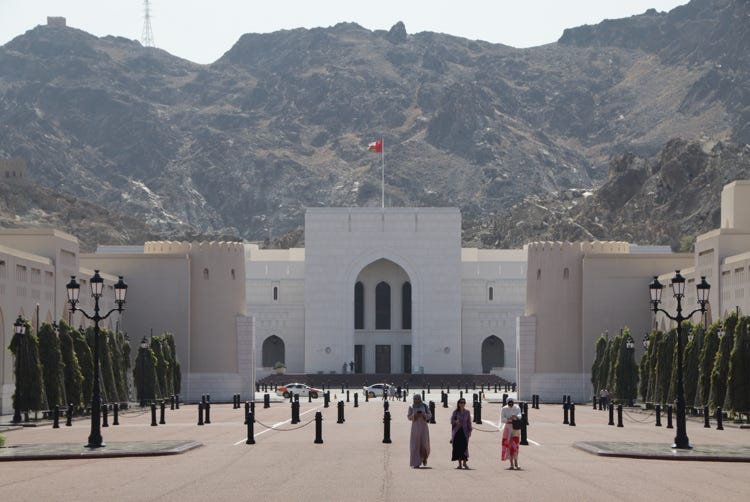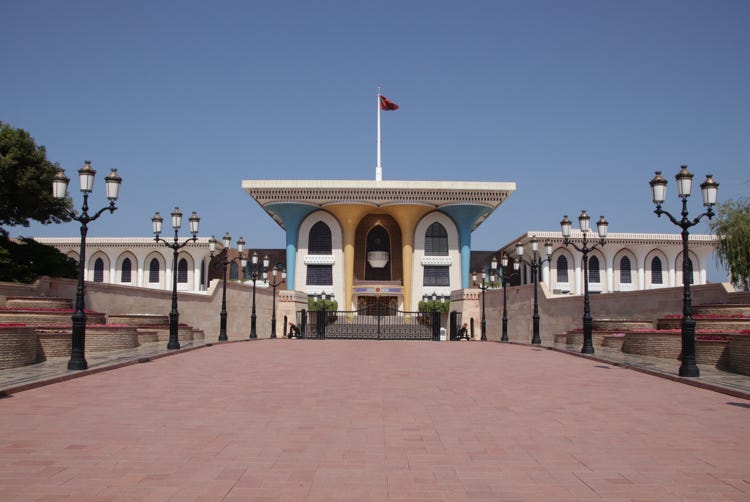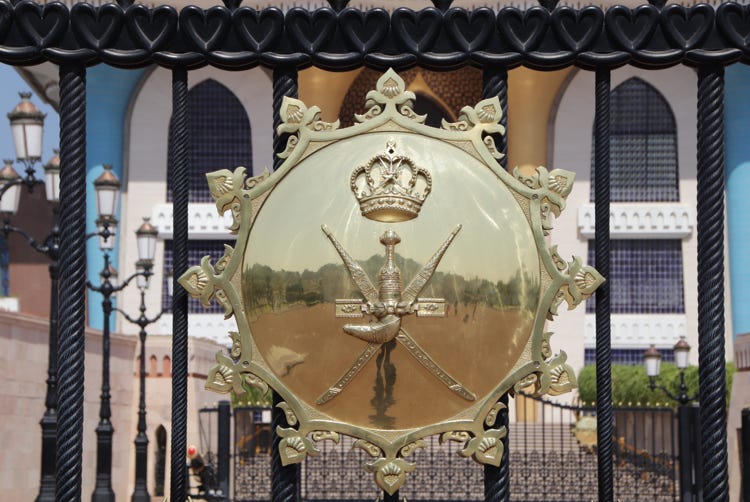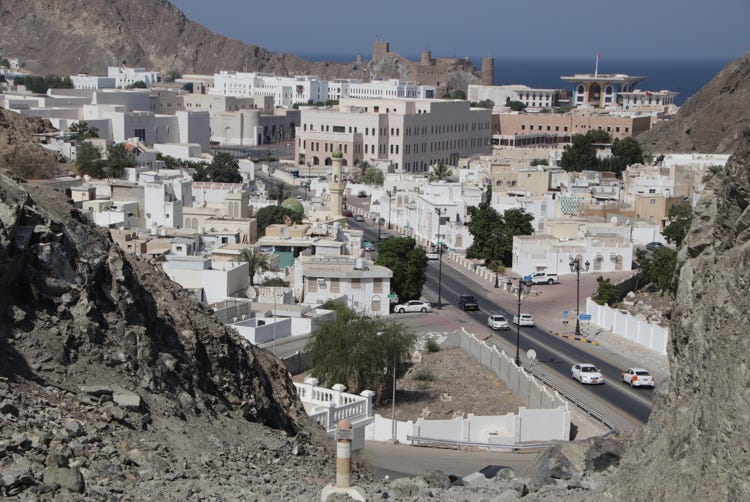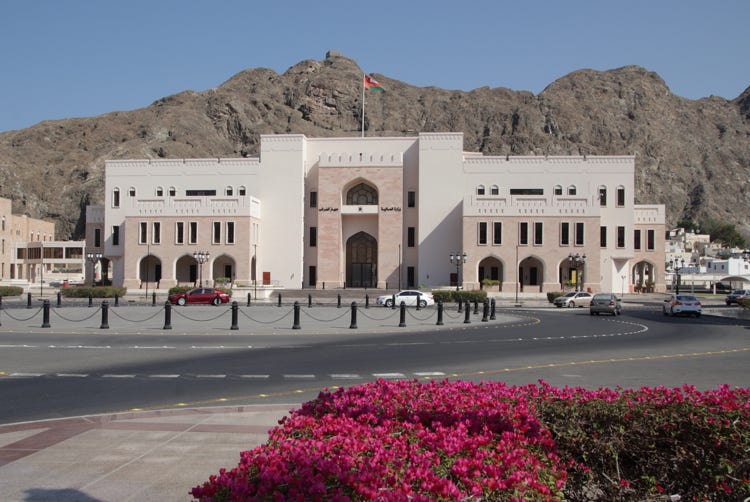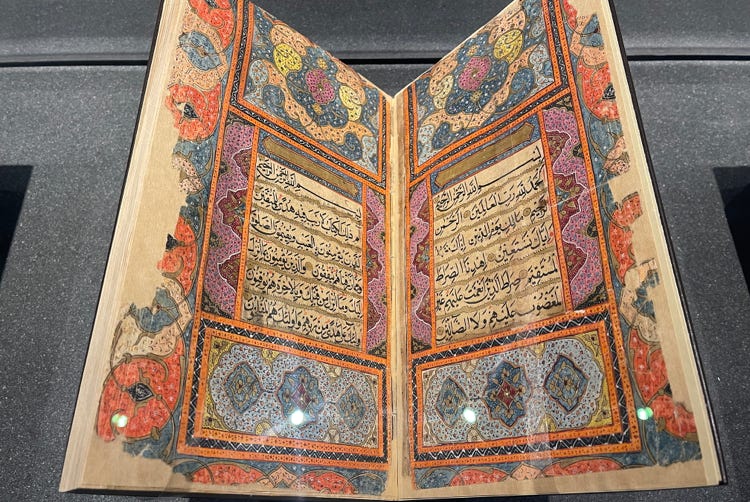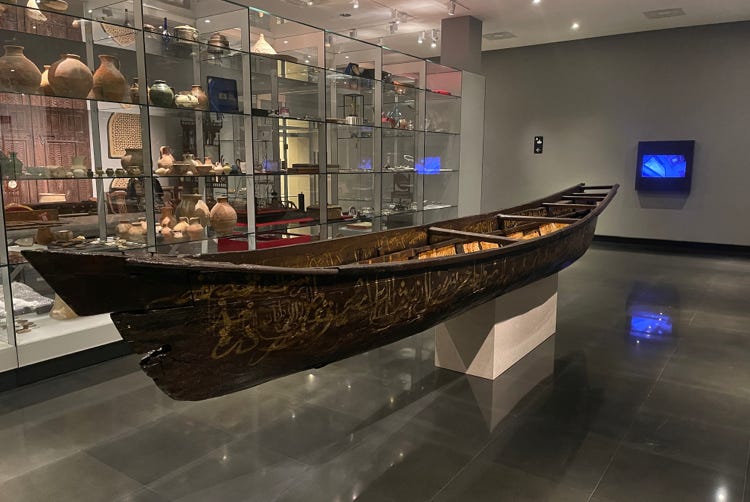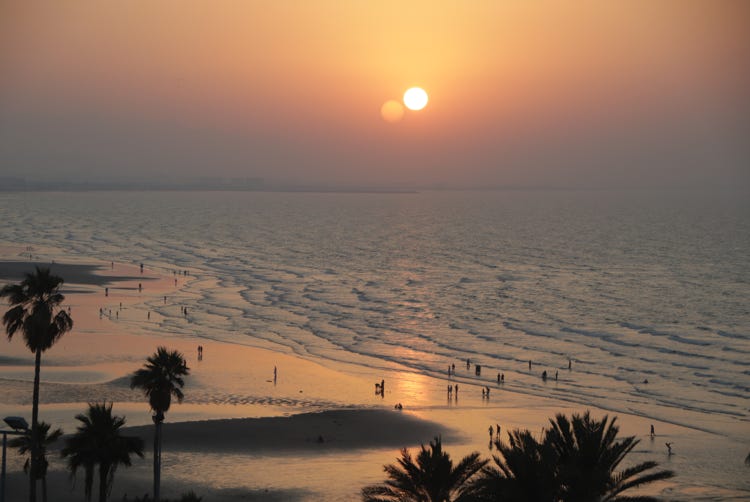Being a Muslim country, Friday’s is Oman’s day of rest. Therefore, no activities were planned for me with the school today. I decided to spend the day walking to see Mutrah and Old Muscat in more detail and in daylight.
Mutrah is about 10 kilometres from the Crowne Plaza Hotel, so I used the Otaxi app on my phone to get a taxi and ride to Fish Roundabout in Mutrah, so named because the roundabout is right beside the Fish Market. I arrived shortly after 9:00am, and the place was already buzzing with business.
In fact, only about half the huge, modern building known as the Fish Market sells fish; the rest sells fruits, vegetables and other foods. However, the fish market is easily the most interesting part of the building. Although the building is large, modern and air conditioned, the sights within are timeless, with all sorts of fish (many of them huge), crabs, stingrays, octopi, prawns, and so on, lying out on the benchtops ready for sale. It all seemed quite hygienic, with no nasty stale smells or anything like that.
The day was already starting to warm up as I left the fish market and walked along the Corniche towards Mutrah Fort. The white buildings looked resplendent against the bright blue sky and the aqua waters of the harbour , which also showed the boats beautifully in the morning sunlight, whether small wooden dhows or the Sultan’s yacht and supporting fleet of vessels. Being Friday morning, the streets of Mutrah were less crowded than I had experienced during my evening walk, and sadly ‘Juice World’ (like every other business other than the fish market) was closed.
Mutrah Fort looked even better in the morning sunlight than it had at sunset a few days earlier, and it was open. This visit to the Fort was quite a different experience from my sunset visit as the lighting across the town was from an entirely different angle, and it was much less crowded. There was really only one other person visiting the fort at the time, and we got into an interesting conversation. The young man was a geographer from the US and was studying in Oman for a year, undertaking a combination of physical geography and global affairs courses in Muscat. Naturally, we found quite a lot to talk about (for roughly half an hour or so).
Having finished at the Fort, I returned to sea level and started to walk towards Old Muscat. The distance between Mutrah Fort and Old Muscat was about four kilometres along the new roadway that follows the shoreline around the headland at Riyam Park and through the ornamental gate at the entry point to Old Muscat. That may not sound like a long walk, but in the desert heat (and in the absence of refreshment at Juice World) it was more arduous than I had expected, especially as I took a few diversions to Muscat Marine Tower (it was closed), Riyam Censer Monument (it was closed) and up the hill along Riyam Street to take in the traditional city view.
Having reached Old Muscat I found a small supermarket that was open and bought a much needed can of Pocari Sweat. Suitable rehydrated, I walked around the streets of Old Muscat, taking in several scenic highlights including Al-Mirani Fort, the Masjid Al-Khor mosque and the Royal Courts before arriving at the wide colonnade in front of the Al Alam Palace. Being Friday, the homily from the Al-Zawawi Mosque was being broadcast live via loudspeakers across the central part of the city where I was located.
Having taken lots of photos in the area around the royal palace, I wanted to visit the highly recommended National Museum which was located at the southern end of the broad colonnade that led northwards top the palace. However, being Friday the Museum was closed until 2:00pm, which was another hour and a half away.
Therefore, I continued walking to the south-east along Al Saidiya Street until the road reached the crest of the hill, at which point I took a hairpin turn to the right and followed a small dirt track to the top of a hill that provided a stunning view across the entire city of Old Muscat.
I walked back downhill into Old Muscat hoping to find a juice shop that was open, but I had no luck. A group of men were standing beside the street and, as I have found quite often in Oman, they smiled, greeted me and began a conversation. As we were just finishing, the owner of the small juice shop near the place we were standing returned from the mosque to open his store; I really felt relieved as I was feeling the heat and dehydration. I sat in the small store and really enjoyed a couple of mango juices until it was time to take the short walk to the National Museum.
The National Museum certainly lived up its reputation. Set in a lavish 13,700 square metre building with excellent air conditioning that opened in 2016, the Museum displayed an impressive collection of artifacts dating from prehistoric times through the era of Oman’s extensive empire right up to the present day. There were 14 permanent galleries including The Land and the People Gallery, Maritime History Gallery, Arms and Armour Gallery, Aflaj Gallery, Currency Gallery, Prehistory and Ancient History Galleries, Splendours of Islam Gallery, Oman and the World Gallery, Intangible Heritage Gallery and the Renaissance Gallery.
I returned to my hotel using the Otaxi app once again, getting to my room just in time to see a glorious display of a bright orange sunset as the sun dipped down into the waters of the Gulf of Oman.
Having rested for a while, I had an extended working meeting over a lovely dinner with the school principal to advance the consulting work that had brought me to Oman, followed by a short drive on the way back to my hotel through Ruwi, Muscat’s “Little India” district.
